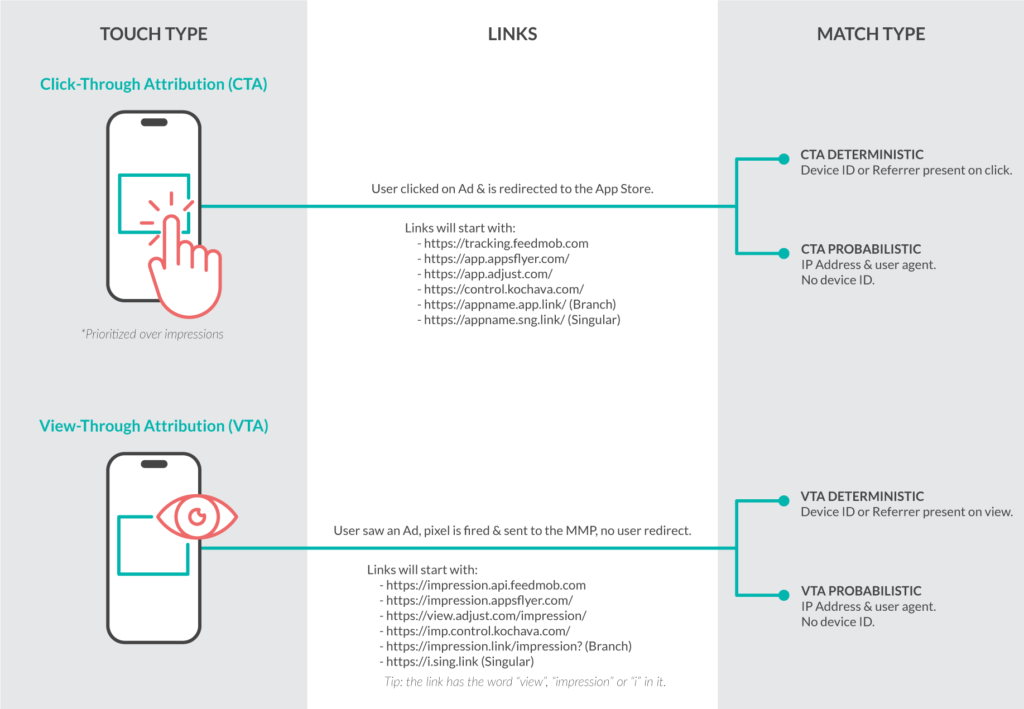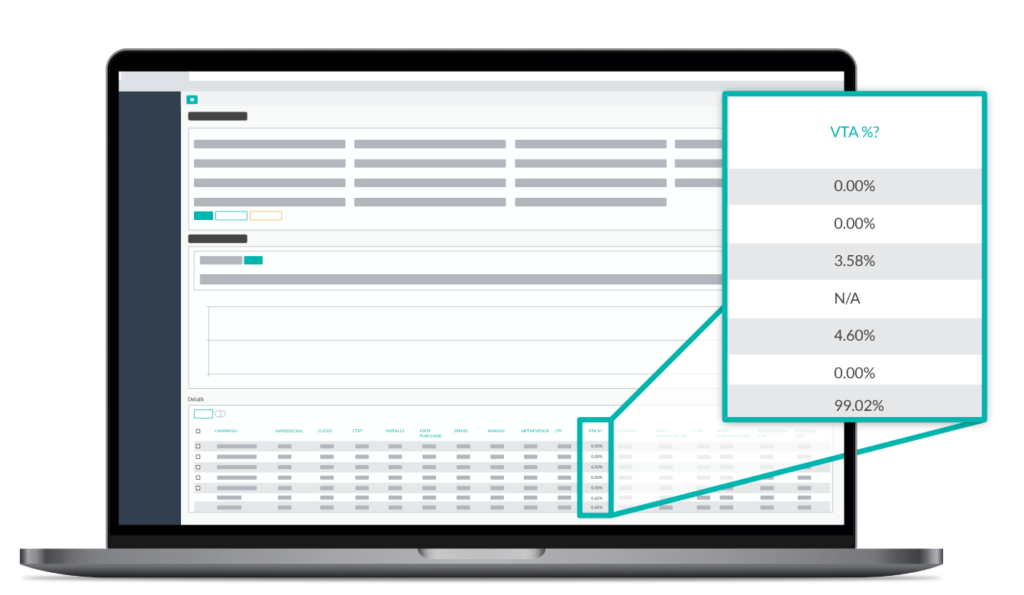Subscribe to our newsletter and get the latest resources sent to your inbox.

View-Through Attribution: A Critical Component to Understanding Mobile UA Campaigns
9 MIN READWhen it comes to understanding the success of your app marketing campaigns, tracking mobile installs and other conversions is the cornerstone — but not every path to conversion is linear. Sometimes a potential user sees your ad but doesn’t click, even though they eventually install the app or take another desired action. That’s where view-through attribution (VTA) comes in.
What is VTA, and why is it important?
VTA allows mobile app marketers to understand better their campaigns’ performance and more about their organic installs. Marketers who don’t make an effort to track VTA will end up with an inflated sense of organic success. VTA is sometimes called impression tracking because it follows impressions and attempts to connect them to conversions within a given time period. (Every campaign is different, though 24 hours is often the standard for tracking VTA.)
Picture this: You’re sitting on your couch for a few moments to scroll through Instagram. You see an ad for a mobile game you think you might like, but just then, your children come into the room, feuding over a toy. You toss your phone aside to mediate the fight. When the drama is over, it’s time to make dinner. A couple of hours later, you’re back on the couch and remember the game, but the ad is gone. So you search for the game in the app store and end up downloading your new favorite game. The ad led to conversion, but the path is unclear, and there is no click to track. Without the help of VTA, a marketing team would count this as an organic install — but that would be misleading.
Miscounting one non-organic install may not be the end of the world, but doing this hundreds or thousands of times over the course of a campaign can skew your data. Not only will you put too much stock in your organic installs, but you won’t be able to give credit where credit is due. Ultimately, this impacts budgeting decisions — and when budgets are tight, it’s crucial to have all the available data to make better decisions. What might, at first glance, appear to be an underperforming campaign may be a big success after taking VTA into account.
VTA Match Types and SKAN
While VTA is, by its nature, less decisive than click tracking, it’s still integral to having a holistic understanding of your user acquisition campaigns. As with all things related to attribution, VTA has gotten more difficult in the wake of App Tracking Transparency (ATT). This has given rise to probabilistic VTA on iOS — ultimately, the least prioritized match type.

Like other forms of attribution, VTA can generally be tracked either deterministically (when the device ID is available) or probabilistically (when no device ID is available). Our DSP partners — a source of high-quality traffic — perform best with VTA, so when running iOS, we advise enabling VTA probabilistic. If it’s disabled, we advise running the campaign through SKAN instead, which allows for VTA through deterministic matching. We’re big proponents of experimenting with SKAN — and have developed our best practices — but when it comes to DSP campaigns, enabling SKAN is vital to tracking VTA.
How VTA works at FeedMob
Mobile measurement partners (MMPs) understand the importance of VTA, and the FeedMob team works with them to help clients get a fuller understanding of their campaign attribution. Depending on a client’s MMP, we can either fully set up VTA tracking or work with the client to configure it. In either case, our clients can easily discern click-tracking from view-through traffic in their custom dashboards.
As you can see in the image below, FeedMob’s real-time dashboards track “VTA%?” which shows a snapshot of how much of a campaign’s traffic is VTA.

Our conversion records provide more detail if you want to dive a little deeper into the data. Looking at columns “Click Ourl” or “Click Target Url” below, you can see which URL was used and, therefore, which engagement (View or Click) was attributed to the conversion event.

Similarly, FeedMob clients can easily see whether a match uses deterministic or probabilistic data. Clients who want to use probabilistic matching on iOS — whether for VTA or click-tracking — typically do this at an app settings level in their MMP.
Navigating VTA with expert help
Understanding VTA and how it impacts your campaign decisions — especially outside the familiar territory of search and social — is no easy feat. But with the right team in place, you can do it! If you are a FeedMob client and have questions about VTA and its impact on your campaigns, don’t hesitate to reach out to your account manager. That’s what they’re there for. If you are not already a client but want to understand more about how our team of experts can help you navigate VTA and other challenges in the world of user acquisition outside of search and social, get in touch using the button below.
Posted: February 21, 2023
Category: Mobile Insights Blog, Mobile Performance Strategies
Tags:

